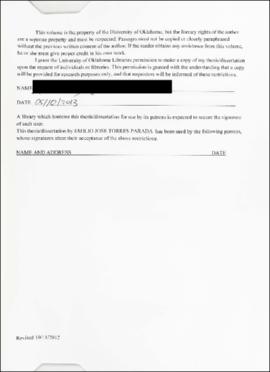| dc.description.abstract | The La Luna Formation, part of the South American upper Cretaceous sequence, has been recognized as one of the most important hydrocarbon source rocks in Colombian and Venezuelan basins. This formation is described as calcareous shale and limestone, black in color, with high foraminifera (Globigerina) content and calcareous and phosphate concretions. Outcrop studies were conducted in the southern part (OUTCROP A) and central part (OUTCROP B) of the Middle Magdalena Valley basin (MMVB) to assess the shale gas potential.
La Luna Formation has been previously sub-divided into three members:
upper, middle and lower, recognized respectively as Galembo (calcareous shales with limestone layers and nodules), Pujamana (claystone, mudstone, gray shale and cherts) and Salada (black shales, black mudstones, black calcareous claystone, black limestone layers and concretions with pyrite). Two major stratigraphic sections were measured, one in the OUTCROP B area with a total thickness of 1000 ft., and the other one in the south area of the basin at OUTCROP A 1200 ft. thick.
Based upon 66 samples analyzed , total organic carbon (TOC) values range for
the Galembo from 1.09% to 11.90% and for the Salada member from 2.15 % to 11.90, Rock Eval pyrolysis data show the La Luna Formation is dominated by Type IIS kerogen, indicating oil and gas prone marine organic matter; thus, these members are excellent source rocks for hydrocarbons. The maturity of this formation increases towards the southeast. Liquid hydrocarbons will be more related to the northern and central part of MMVB and condensates and dry/wet gases will be more related to the southern "MMVB areas. Biomarker analyses reveal variations in redox conditions and a predominant marine organic matter input with anoxic and hypersaline conditions for the Galembo and Salada members.
The SEM analysis identified two major microfabric types in the Salada and
Galembo member: 1) organic hash: most of the samples contain common organic
matter and the mineral edges are very diffuse; and 2) organic clayey with sharp mineral edges and abundant calcite minerals. The porosity types associated with the Salada and Galembo member are porous floccules, intraparticle porosity, fecal pellet porosity and microchannel porosity. For the Galembo member the average total porosity is 8.5% and for the Salada member average total porosity is 8.11 % for the samples analyzed.
The observed facies association and biomarker analysis identified the
depositional environment as shallow marine, middle shelf, in a transgressing sea. Four major third order stratigaphic cycles corresponding to the three La Luna Formation members deposition events are proposed. The the lower Salada member is characterized by a major transgression with a maximum flooding surface at Salada member top and a transgressive surface of erosion (TSE) towards the Salada - Pujamana members' boundary. The Pujamana member deposition was interpreted as a HST-TST regional regression, where the observed Pujamana - Galembo boundary corresponds to a third TSE and the Galembo member is mainly a transgression with fluctuations, which indicates that deposition of the Galembo member occurred during a sea level rise
towards the La Luna Formation top progradational deposits.
This primary assessment of the La Luna Formation indicates a good potential
for a shale gas system, where good organic matter content is present, the formation has reached maturity levels for hydrocarbon generation and has relatively high porosity for oil and/or gas storage. The Salada and Galembo members are good candidates for an unconventional shale gas play, therefore these can be considered as separate operational units, with thicknesses in outcrop from 180-720 ft. for the Galembo member, for the Salada member thickness from 300-400 ft., and approximately 500 ft. of thickness for the transitional Pujamana member, which is very likely to be a possible lithological barrier between the upper and lower La Luna members. | |
